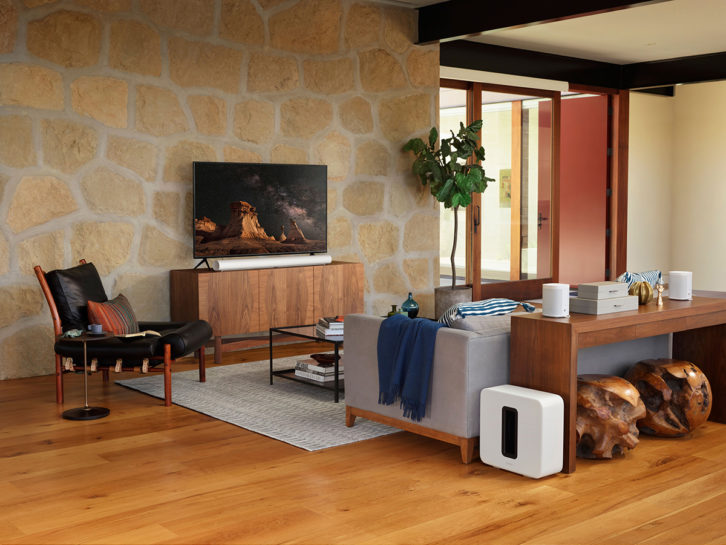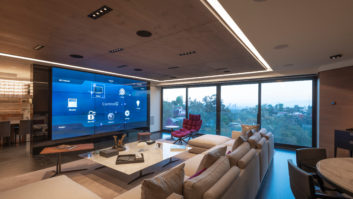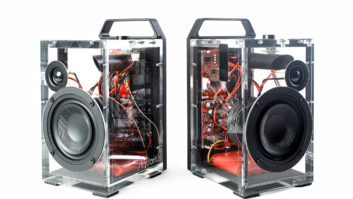
We’ve watched sound systems evolve over the years from their roots as large 2- or 4-channel systems in the ’60s and ’70s to the beginnings of 5.1 surround sound in the ’90s followed by today’s soundbar solutions. Have we evolved or settled for “good enough”? Is it possible to have a great immersive sound experience without breaking the bank or tearing up the family room? Let’s explore wired vs. wireless and you can decide for yourself.
Wired
There’s an old adage in the custom installation industry: “Hardwire it if you can.” Hardwiring doesn’t require batteries, and it removes points of failure while delivering solid power and fidelity to passive loudspeakers. Hardwiring is best accomplished during new construction or in environments where attics and crawl spaces are easily accessible. Homeowners with slab-built homes or no attic access are faced with cutting sheetrock or simply doing without concealed audio.
Hardwiring your audio system also affords tremendous aesthetic benefits. Options like invisible speakers, small aperture, or traditional architectural in-wall/in-ceiling speakers are all on the table when it’s possible to run wire behind the walls.
The last 10 years have seen a migration from traditional hardwired surround sound systems with audio-video receivers to soundbar solutions from companies like Bose and Sonos. Why? Do these solutions sound better? Not always. Look no further than the phenomenon of “good enough.” Customers will choose a simpler solution with lower quality sound over complexity a majority of the time. There will always be the 5 percent who don’t mind the complexity, but for the rest of your customer base, simplicity trumps audio quality 95 percent of the time. Thankfully we’ve now entered a time where the technology is stable enough to deliver high-quality sound in a simple package. Streaming services like TIDAL have brought quality back into the mix and made hardwired sound systems more appealing to a new generation of customers interested in a high-quality listening experience.
Wireless
Until very recently, wireless audio has been the domain of lousy Bluetooth speakers, Sonos multiroom speakers, and a few surround systems. As with anything in the wireless spectrum, these solutions have been plagued by reliability issues, making hardwiring the preferable path. Thankfully organizations like the Wireless Speaker & Audio Association (WiSA) have come along to bring peace to the galaxy of wireless sound. Companies like Klipsch and Savant are using WiSA-enabled sound systems to entice customers back into the world of full surround sound again. All you need is an electrical outlet to add Dolby Atmos or additional subwoofers. WiSA system reliability has been shown to be extremely high, enabling the custom installation industry to embrace these solutions as a means of attaching more audio to a project, increasing average ticket size.
Companies like Bowers & Wilkins, Arcam, and NAD are leveraging Bluetooth 5.0 to enable easy streaming from any mobile device to high end speakers or audio systems. By embracing these simple technologies embedded in every smartphone, customers are being lured back to high-quality audio once again because simplicity has caught up with quality.
Final Verdict
Which is best— wired or wireless? Our industry has an annoying answer for most questions and this one is no different: it depends. If you can hardwire speakers easily, go for it. If you have a customer base where soundbars are a big part of the business, wireless audio is a great way to grow revenue and customer happiness. The bottom line is there’s never been a time where we’ve had as many options at our disposal to deliver an amazing customer experience.
What are you waiting for? Get out there and spread the word. Our industry and your customers will thank you.



